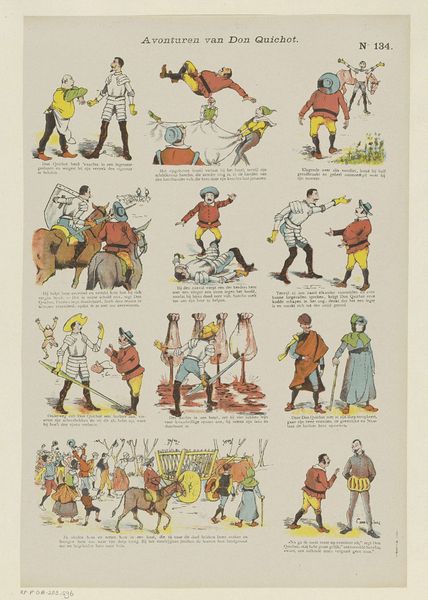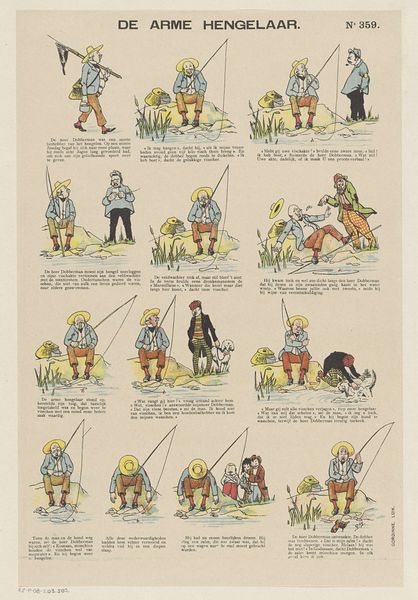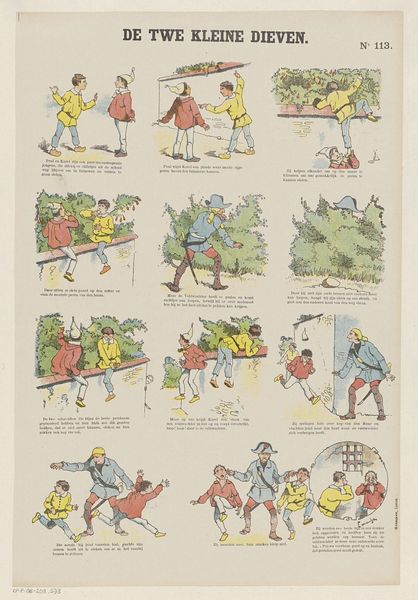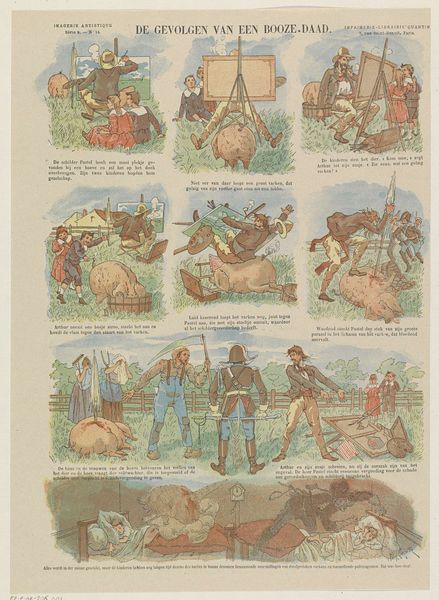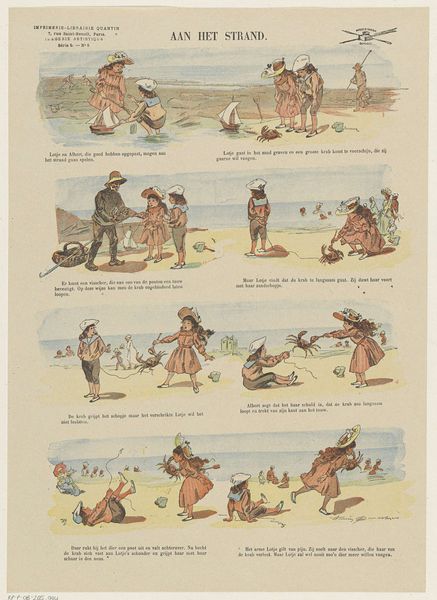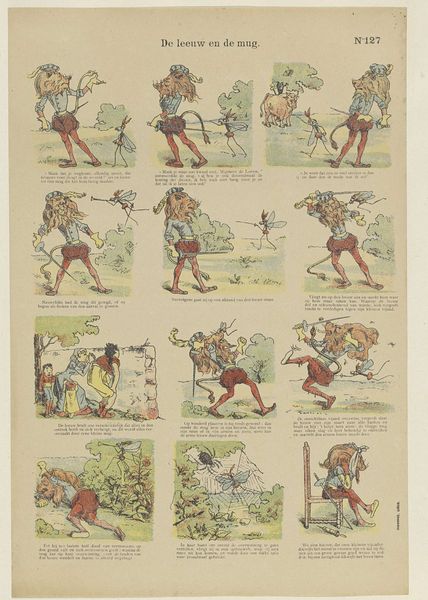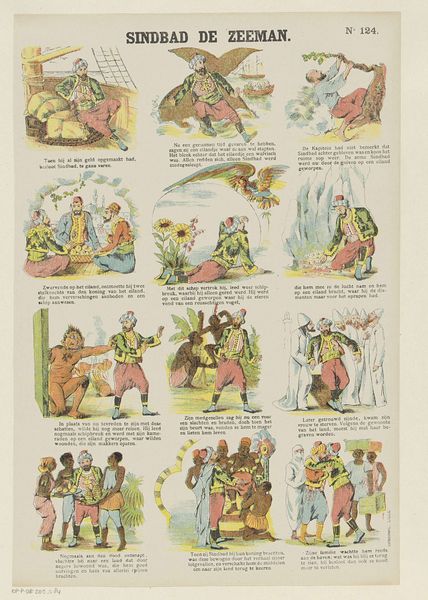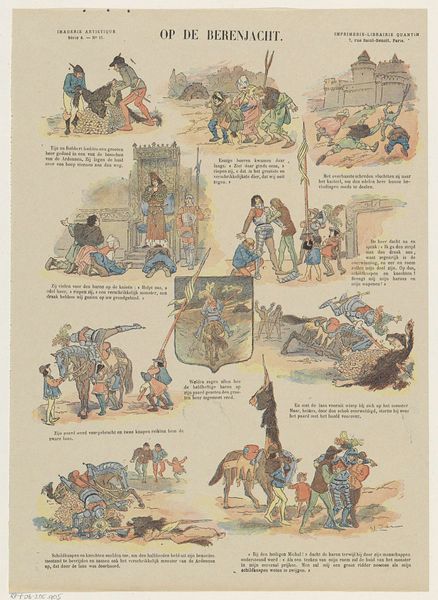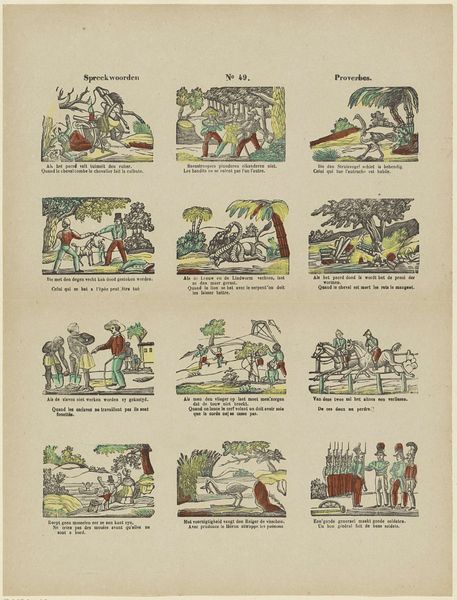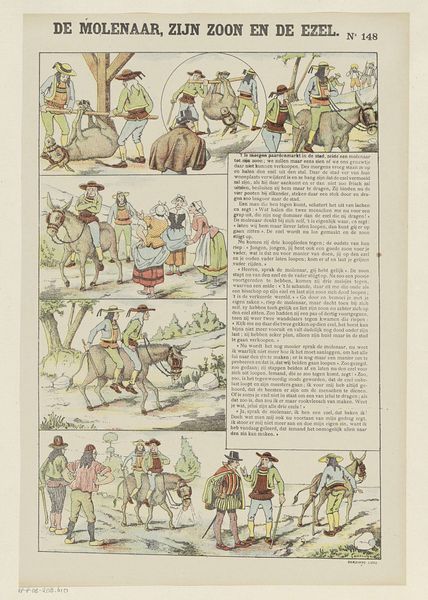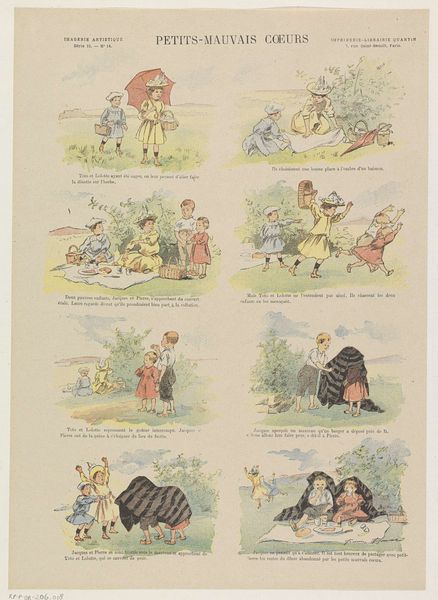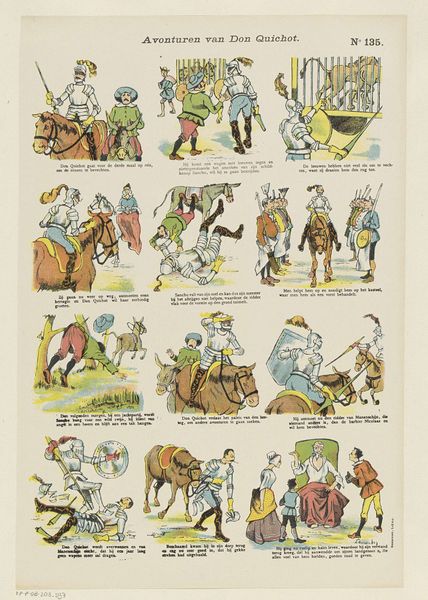
drawing, paper, pen
#
drawing
#
narrative-art
#
paper
#
comic
#
pen
#
genre-painting
Dimensions: height 399 mm, width 270 mm
Copyright: Rijks Museum: Open Domain
Editor: This delightful drawing, "Het Ijs" or "The Ice," by Jules Maurel, likely created between 1894 and 1959, is done with pen on paper. It almost looks like a comic strip, showing different scenes of children on a frozen pond. The mood seems playful but also a bit cautionary, with some kids falling! What catches your eye in this piece? Curator: This work intrigues me, particularly when considering the social function it might have served. Printed works like these, especially those circulated as prints or in illustrated magazines, often reinforced specific behaviors or values. Notice how it’s titled “The Ice"–it's teaching, or reminding, the public about this seasonal phenomenon, how to interact with it, and the consequences of being incautious. Editor: That's fascinating! So, it's more than just a playful scene? Curator: Precisely. Consider the composition. We see a narrative unfolding, but not as a straightforward story. Instead, it's segmented. What do you observe in terms of how different bodies, especially the boys and their dog, interact with their surrounding environment across the individual panels? Editor: There's a definite progression of actions - kids cautiously approaching, some confidently skating, and then... the mishap of falling through the ice! The dog even rescues someone at the end! It seems like a visual manual. Curator: Exactly. It subtly prescribes a safe approach to outdoor winter activities, and simultaneously makes these activities part of childhood in a quickly urbanizing landscape. How might this have shaped, or reflected, the period's perceptions of childhood and the role of play? Editor: I guess it presents a romantic view – even the potential dangers are softened by the humorous drawings and the happy ending. Curator: A romantic, and perhaps somewhat sanitized view. Still, examining these visuals helps us understand how cultural norms are conveyed and reinforced, influencing people's conduct within a specific context. It really underscores the public function that art served. Editor: I never thought about it as a set of rules! This makes me consider other works and how they were shaped to affect public behaviour. Curator: Indeed. It’s crucial to look at these pieces as actively participating in societal dialogues about values, dangers, and the social order.
Comments
No comments
Be the first to comment and join the conversation on the ultimate creative platform.
